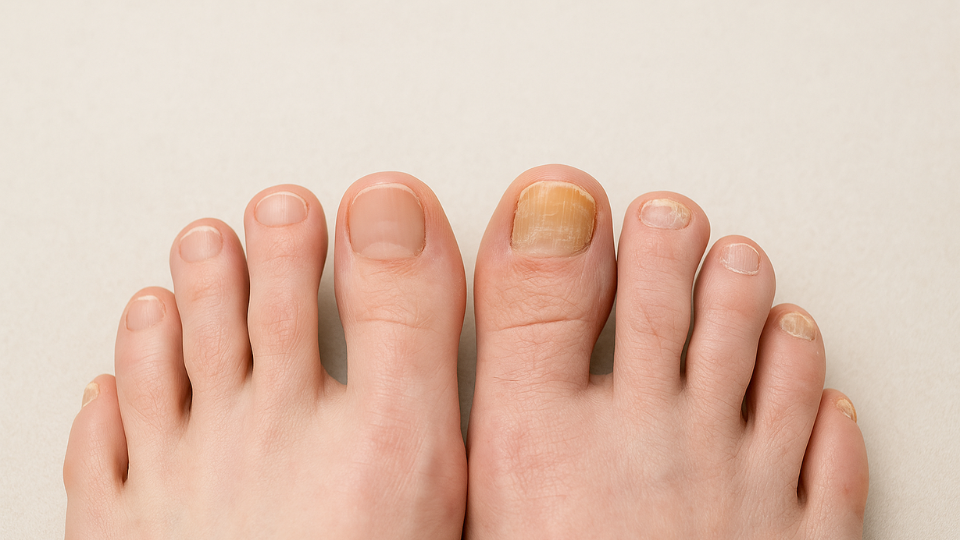Is Toenail Fungus Hereditary? What You Need to Know About Family Risk
Wondering if toenail fungus runs in your family? Learn about genetic risk, causes, and prevention from the podiatry specialists at FAS The Woodlands.

If you wake up with a stabbing pain in your heel that gets better as the day goes on, chances are you’re dealing with plantar fasciitis, one of the most common causes of heel pain. And like most people, your first question is probably: Does plantar fasciitis go away?
In this article, we’ll break down how long plantar fasciitis usually lasts, what factors affect healing, and how to accelerate recovery with expert-backed solutions.
Plantar fasciitis is the inflammation or irritation of the plantar fascia, a thick band of tissue that runs along the bottom of your foot and connects your heel to your toes. It acts like a shock-absorbing bowstring, supporting the arch of your foot.
When the plantar fascia is overstressed through repetitive strain, poor footwear, or biomechanical issues, it can become damaged, resulting in inflammation and pain.
Want a deeper look at what’s behind your heel pain? Learn more about what causes plantar fasciitis in our detailed breakdown of risk factors, biomechanics, and treatment approaches.
In some mild cases, plantar fasciitis can improve with time, especially if you reduce the activities that caused it and make smart footwear choices. However, if left untreated or aggravated through repetitive stress, it may become a chronic condition.
So when asking “does plantar fasciitis go away?” the better question might be: What can I do to help it heal faster and prevent it from coming back?
Recovery time depends on several factors, including the severity of the condition and how quickly treatment begins. On average:
Certain habits and conditions can delay healing or make symptoms worse:

Here’s what our podiatrists at Foot and Ankle (FAS) The Woodlands recommend:
Choose shoes with good arch support, cushioning, and a slightly elevated heel to reduce pressure on the plantar fascia. Read our guide on choosing the best shoes for foot pain.
Orthotics can correct imbalances and provide consistent support where your foot needs it most. Learn the difference between custom and over-the-counter orthotics.
Daily stretching of the calves, Achilles tendon, and plantar fascia can reduce tension and improve flexibility. Try these plantar fasciitis stretches and exercises.
Icing the heel for 15–20 minutes several times a day can reduce inflammation and relieve pain.
Switch to low-impact activities like swimming or cycling while your foot heals. Avoid running or prolonged standing during flare-ups.
Wearing a splint while sleeping keeps the foot in a stretched position, reducing morning pain.
For additional support strategies you can use alongside medical treatments, check out our blog on plantar fasciitis relief with the best insoles, medical devices, and arch support solutions. It’s a helpful guide to finding everyday products that promote healing and reduce pain.
If your plantar fasciitis hasn’t improved with conservative care, you’re not out of options. At Foot and Ankle Specialists The Woodlands, we specialize in advanced treatment techniques designed to relieve pain and support long-term healing.
Corticosteroid injections may be recommended when inflammation remains despite rest, orthotics, and physical therapy. These injections deliver powerful anti-inflammatory medication directly into the plantar fascia, providing targeted relief for more severe cases.
Developed in part by Dr. Marcin Vaclaw, this innovative technique promotes healing without the need for a surgical incision. The procedure uses natural substances that stimulate blood flow and tissue repair.
For more advanced or chronic cases, this minimally invasive surgery involves inserting a tiny endoscope (a small camera) to visualize and carefully release the plantar fascia. It allows for precise treatment with minimal disruption to surrounding tissues.
These advanced solutions are ideal for individuals who’ve exhausted non-surgical options but still experience significant heel pain. Our team will help determine the best next step based on your specific condition and goals.
It’s time to seek expert care if:
Yes, plantar fasciitis often goes away with the right treatment, patience, and preventive care. The key is addressing it early and staying consistent with your recovery plan.
At Foot & Ankle Specialists (FAS) The Woodlands, we offer comprehensive treatment options, from orthotics and therapy to advanced laser care, to help you. Schedule your consultation today.

Wondering if toenail fungus runs in your family? Learn about genetic risk, causes, and prevention from the podiatry specialists at FAS The Woodlands.